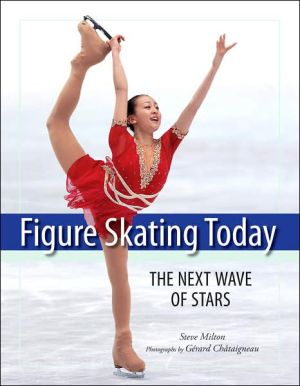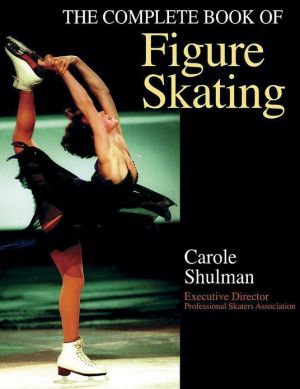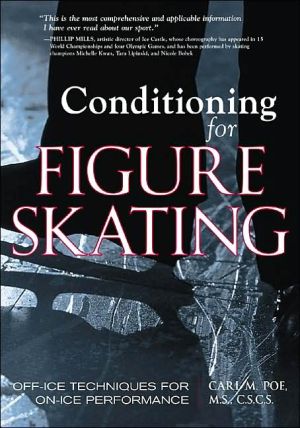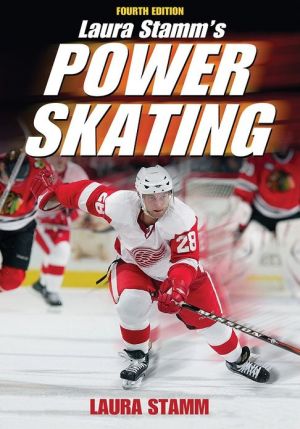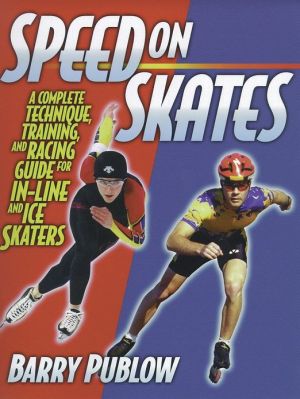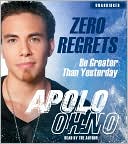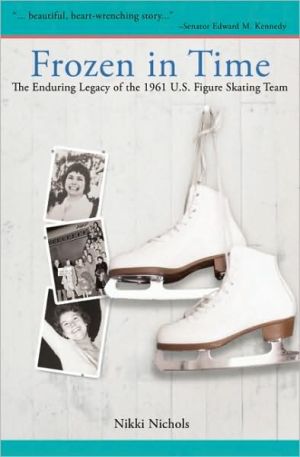Figure Skating Today: The Next Wave of Stars
A fan's book on international skating stars -- today's best and tomorrow's brightest\ Figure skating has burst back onto the international sports scene, following a series of unfortunate judging controversies. There is a fresh crop of skaters who are jumping higher, skating faster and pushing artistic and technical boundaries like never before. The figure skating revolution includes new rules plus new countries in competition, and sees women once again landing the triple axel. The budding...
Search in google:
Well-illustrated with action photos this book showcases the top international figure skaters and rising stars looking to the next Olympics. Organized around competitions the book the book provides behind-the-scenes detail and individual statistics.
Excerpted from the\ \ Introduction \ Miki Ando, the final skater of the season, stared up at the scoreboard, her face in a state of suspended animation. 'While the crowd clapped in unison, she hung frozen between exhausted relief and whatever would happen next.\ Suddenly her marks, the last scores of the year, appeared in an electronic flash: personal bests of 125.85 points in the freeskate, and 195.09 overall. Beneath them, the most important number of her young life. In Japanese: iti. In English: one. Universal translation: world champion.\ As the reality struck her, Ando broke into syncopated sobs, and she pressed both hands to her face, a rivulet of tears streaking first one cheek, then the other. The 19-year-old jumping pioneer hugged her coach Nikolai Morozov so hard, she drenched his dark suit coat. She could not control her crying, even as she was being interviewed on the spot for the benefit of the crammed stands at the Tokyo Metropolitan Gymnasium. She tried to answer a question and would get only a few words out before the tears would force her to take a deep breath.\ Less than a year after her controversial selection to the Japanese Olympic team, subsequent 15th-place finish and being roasted in the national press, Miki Ando was the champion of the most anticipated event at the most important world championship ever held in Japan. She had beaten the two sensational 16 year olds who dominated all the pre-Worlds attention, teammate Mao Asada and South Korea's Yu-Na Kim. And now that the almost unbearable pressure was over -- if only to be reborn again, like a perennial flower, in a few weeks -- her tears, of joy and ofremembered pain, released it.\ "I did not expect that I could win," she said through tears.\ In figure skating, there are always tears.\ That's half the reason they call the area where skaters wait for their marks the Kiss 'n' Cry. And there's usually a lot more crying than kissing.\ But the 2007 world championship, which confirmed a dramatic eastward shift in skating's power balance, was an even wetter Worlds than most. There was more spontaneous emotion among the winners, and there will continue to be more as the sport heads to Vancouver's 2010 Olympics. That's because skaters can no longer absolutely expect a certain result. They cannot prepare their body language or their victory speech in advance, because there is no understood and accepted pecking order. You must skate, and skate well, on the day - or you will lose. When skaters do perform well, and do win, they are drained to exhaustion with no defense against overwhelming feelings.\ Forty-eight hours before Ando's emotional celebration, there had been an even more graphic spilling of tears. Daisuke Takahashi, Ando's mercurial countryman, won the freeskate to capture the silver medal, the best finish by a Japanese man in the history of the world championships. Overcome by the magnitude of the performance of his life, he sobbed uncontrollably for several minutes, as the partisan crowd cheered lustily, smashing the old stereotype of the quietly appreciative Japanese audience. Takahashi had played to the crowd, and the crowd to him.\ "I heard the roaring cheers from the audience when I was getting tired, so I just tried to respond and complete the program," he said.\ What a response. He landed a quad, with a slight touch of the hand to the ice -- his only mistake in four-and-a-half minutes of dynamic brilliance and eight triples. At the end, amid the deafening applause, he could not contain himself, and broke down.\ Once again, the human towel was Nikolai Morozov, who works with both Ando and Takahashi, and dozens of others, half a world away in Simsbury, Connecticut.\ The night before Takahashi's tearful reaction, observant fans could detect a dew drop or two on the normally impassive face of coach Bin Yao. The architect of China's wall of dominance in the pairs discipline, Yao was a member the first pairs team to represent China 27 years earlier, and he had been humiliated by a lack of preparation and an inability to compete. When his exemplary students Xue Shen and Hongbo Zhao skated off the ice and likely into retirement, with their third world championship and a long, loving, standing ovation, Yao shed a subtle tear. The awkward kids he had nurtured and driven for 15 difficult years were now mature adults, and they were leaving the Kiss 'n' Cry, probably for the last time. They were leaving as multiple champions, and their logical heirs were also Chinese: either 2006 world champions Qing Pang and Jian Tong, or daredevil youngsters Dan Zhang and Hao Zhang.\ In 1980, as Bin Yao and Bo Luan made China's pairs debut at Worlds, their first of three consecutive last-place finishes, Asia had won just two world championship medals: bronzes by Japan's Emi Watanabe in 1979 and Minoru Sano two years earlier. But in 2007, two-thirds of the nine available medals in the men's, women's and pairs' events went to Asian countries: three to Japan, two to China, one to South Korea.\ Bin Yao, who had been there for the worst, was now watching the best, Shen and Zhao, bid farewell. No wonder he was moved.
Introduction Skating to the Olympics\ The New Years Starts in Autumn: Grand Prix Events\ \ Skate America\ Skate Canada\ Cup of China\ Trophée Eric Bompard\ Cup of Russia\ NHK Trophy\ Grand Prix Final\ \ Home for the Holidays... and the National Championships\ \ Japanese Nationals\ Canadian Nationals\ U.S. Nationals\ \ Winter: Something Old, Something New\ \ European Championships\ Four Continents\ \ Springing to Worlds\ \ Junior Worlds\ World Synchronized Skating Championships\ The World Championships\ \ Figure Skating in Japan: A New Era\ Glossary Index Acknowledgements
\ The Record (Kitchener, ON) - Carol Jankowski\ [Milton] reviews performances at the 2007 international competitions, providing more trivia about placements than even diehard enthusiasts might want.... Where the book shines, however, is in the exceptional photos by Gérard Châtaigneau, which show the glamorous costumes in detail never available to those watching on television or in an arena. On their own, they are worth the price of the book.\ \ \ \ \ \ Resource Links, vol.13, no. 4 - Linda Aksomitis\ This non-fiction title is nothing less than stunning in its presentation. Full colour throughout, Chataigneau's photography is fabulous, giving us images rich in expression as well as movement. The format of the book is excellent... This title is a must-have for any library that has readers interested in winter sports and skating. Readers from fourth grade to adult will find it jam packed with statistics and the story behind them.\ \ \ \ Rainbo Electronic ReviewsSteve Milton shows you the best new figure skaters from around the world with stunning color photographs on each page, along with a brief biography. If you're a fan, you'll want to page through this book all season long to check on the backgrounds of these amazing athletes.\ \ \
